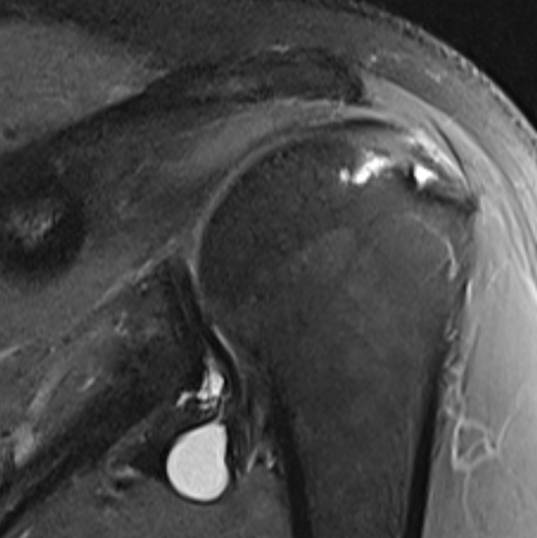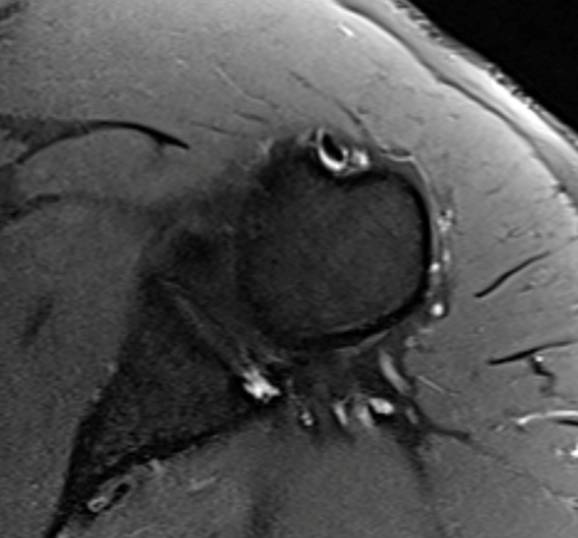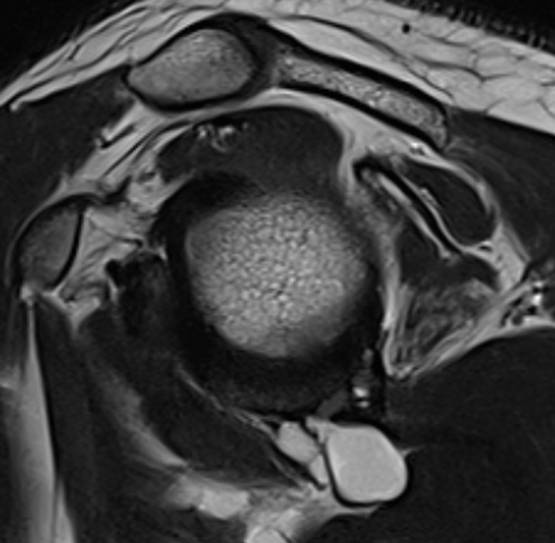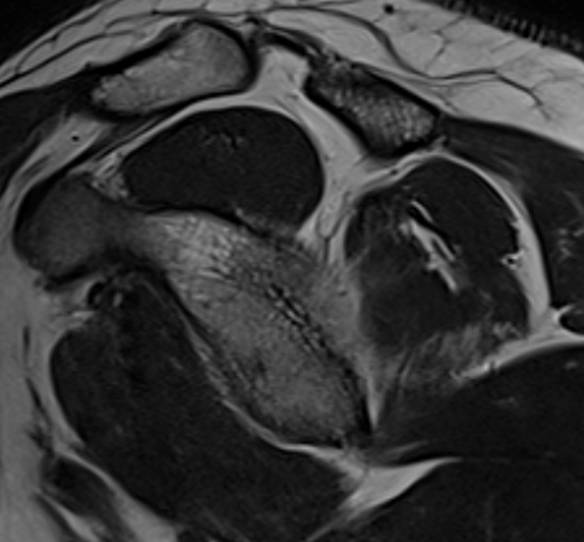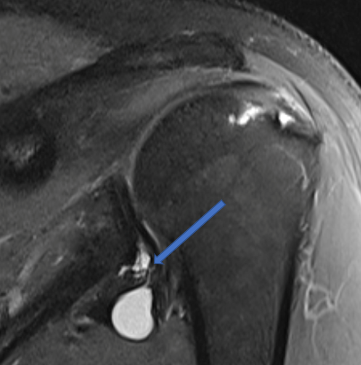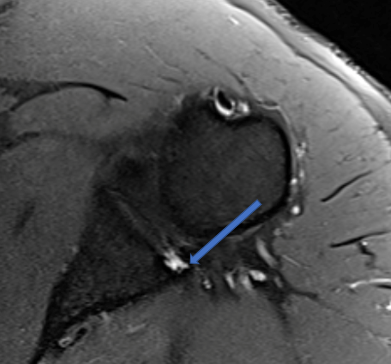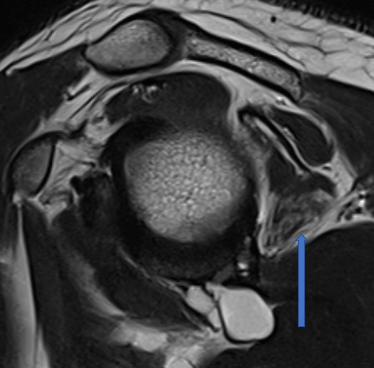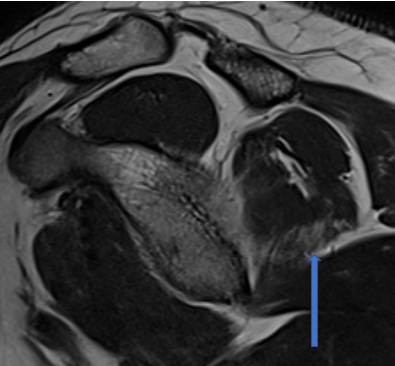34 year old gentleman with pain in left shoulder
- Fig 1 (Coronal PDFS) & Fig 2 (Axial PDFS) images demonstrates posteroinferior labral tear with paralabral cyst. Note is made of an Incidental partial tear of the Supraspinatus tendon.
- Fig 3 & 4 (Sagittal T2WI) demonstrates paralabral cyst posteroinferior to glenoid and moderate atrophy of Teres Minor.
Diagnosis:
Posteroinferior labral tear with paralabral cyst causing moderate atrophy of Teres Minor: Quadrilateral space syndrome
Discussion:
QUADRILATERAL SPACE SYNDROME
- Compressive neuropathy of Axillary nerve or its branches in relatively confined anatomical space called Quadrilateral space/Quadrangular space.
- Boundaries
- Medial: Long head of Triceps
- Lateral: Humeral shaft
- Superior: Teres Minor
- Inferior: Teres Major
- Contents
- Axillary nerve (Innervates Teres Minor and posterior fibers of Deltoid)
Posterior circumflex humeral artery
- Axillary nerve (Innervates Teres Minor and posterior fibers of Deltoid)
- Causes
- Fibrotic bands due to recurrent microtrauma.
- Space occupying lesion: Ganglion cyst, Paralabral cyst, lipoma etc
- Acute trauma, glenohumeral instability: Tractional injury to nerve
- Humeral decentering in old age due to rotator cuff tears, labroligamentous pathology, osteoarthritis
- Isolated Teres Minor atrophy is more common due to anatomical variations in Axillary nerve branching pattern affecting Teres Minor branch which has a vulnerable course close to joint capsule and inferior glenoid rim.
- Compression of main trunk of Axillary nerve may result in denervation changes in both Teres Minor and posterior Deltoid.
- The term “Quadrilateral space syndrome” is not preferred in cases of Isolated Teres Minor atrophy without any mass lesions in Quadrilateral space.
- From a practical standpoint, whenever we encounter denervation changes, it is important to mention the severity of atrophy, muscles involved and to carefully evaluate for any compressive lesions long the expected course of axillary nerve.
Dr Dayanand Sagar G, MD
Consultant Radiologist
Columbia Asia Radiology Group

